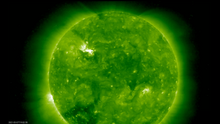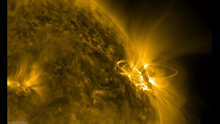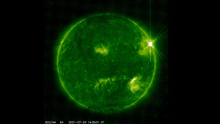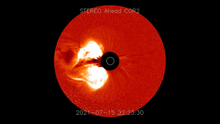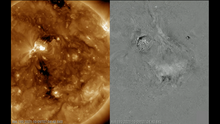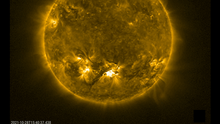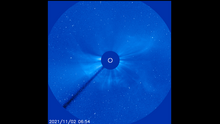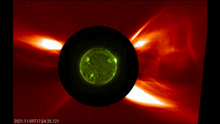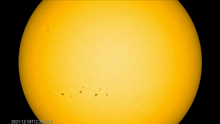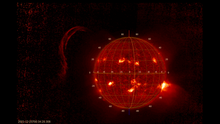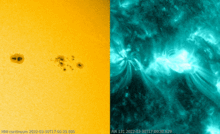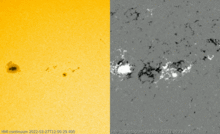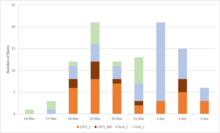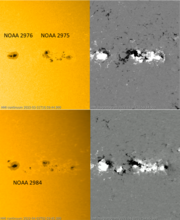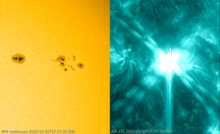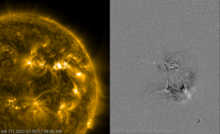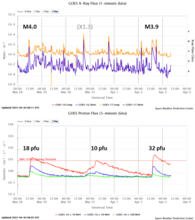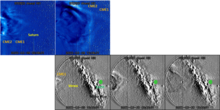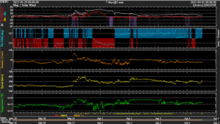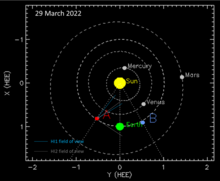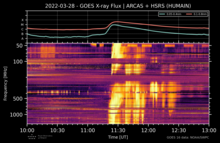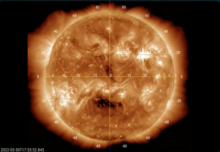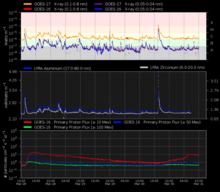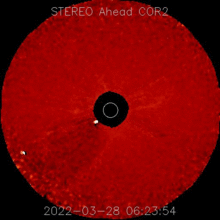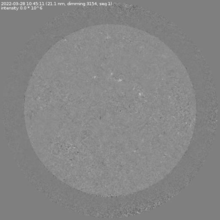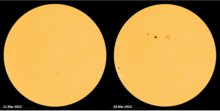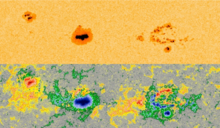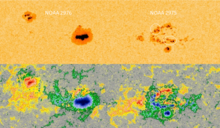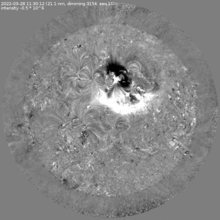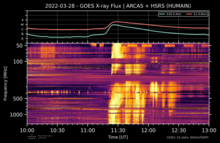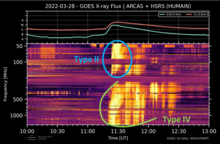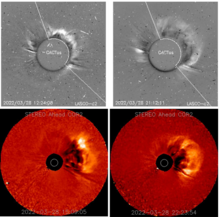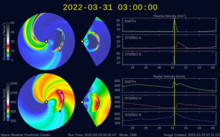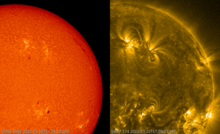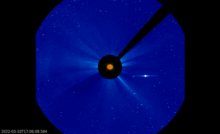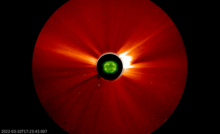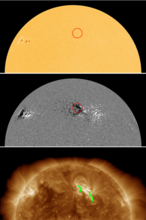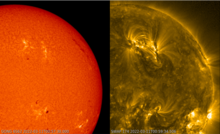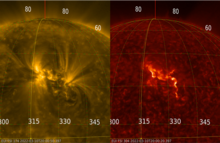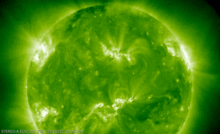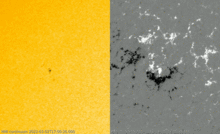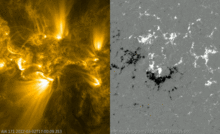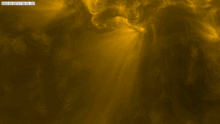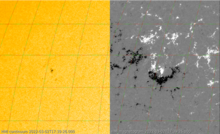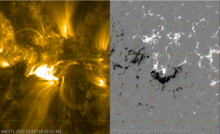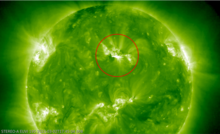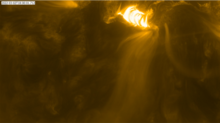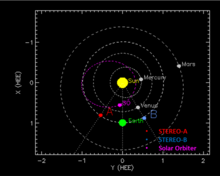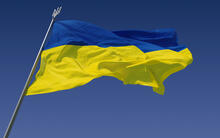news
Submitted on 2022-04-12
A compilation of the most memorable space weather moments of 2021, featuring data, links and movies.
Submitted on 2022-04-06
NOAA 2975 was one of the most flare-productive active regions so far this solar cycle, generating also an X-class event on 30 March. The solar radiation intensity and geomagnetic activity from CMEs associated with these eruptions reached only minor storm levels.
Submitted on 2022-03-31
A class X1.3 solar X-ray flare occurred on 30 March 2022 with peak time 17:37UT. A type II and type IV radio emission were detected at 17:32UT and 17:34UT respectively, indicating an associated CME.
Submitted on 2022-03-30
During the last few days, an increase in sunspot numbers, solar flares and earth-directed CMEs have been observed.
Submitted on 2022-03-22
On 22 March, 5 scientists presented their work to thousands of enthousiastic primary school children from all over Flanders. The STCE had 2 scientists participating.
Submitted on 2022-03-16
NASA has just announced the passing away of Eugene Parker, known for his contributions in the research on the solar wind and coronal heating.
Submitted on 2022-03-15
The CME associated with a long duration event on 10 March impacted the earth enviroment on 13 March and caused a moderate geomagetic storm later that day and early on 14 March.
Submitted on 2022-03-08
An M2 flare erupted in small sunspot region NOAA 2958 on 2 March. The entire fleet of solar satellites was able to record the event.
Submitted on 2022-03-04
Le Comité de Direction du SPP Politique scientifique, s’associe aux nombreux messages de soutien de la communauté scientifique belge et internationale concernant le conflit armé en Ukraine.
Submitted on 2022-03-04
Het Directiecomité van de POD Wetenschapsbeleid, sluit zich aan bij de talrijke steunbetuigingen van de Belgische en internationale wetenschappelijke gemeenschap in verband met het gewapend conflict in Oekraïne.
Pages
Zircon - This is a contributing Drupal Theme
Design by
WeebPal.

